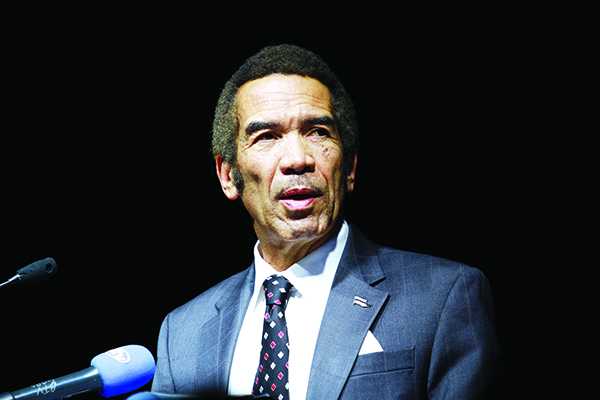Khama lauds Botswana/De Beers’ partnership
The relationship between Botswana and De Beers should be celebrated as it has over the years helped propel the country’s economic and social trajectory to greater heights.
President Ian Khama told delegates when giving a keynote address at the annual Diamond Conference in Gaborone.
De Beers and Botswana have been together since the discovery of diamonds in the late 1960s, a partnership which culminated in the formation of Debswana which is one of the biggest diamond mining firms in the world.
According to the President, it will have been a hard call for Botswana to have achieved its double digits’ growth over the years, if it were not for De Beers, a mining company which was formed by British imperialist, Sir Cecil John Rhodes in the 1880s.
“Our partnership spans over decades and I hope that it will continue to strengthen with time,” said Khama, who this Monday made his last state of the nation address before he vacates office at the end of March 2018.
Botswana’s economic growth rates have averaged just over 5 percent in the last 50 years. The two parties, have, and will continue to explore future opportunities in the diamond industry, which is considered highly secretive, especially when it comes to pricing.
The relocation of some of the key functions of De Beers from London to Gaborone three years ago is one of the highlights of the De Beers/Botswana relationship, which has in the process created jobs and the much-needed Foreign Direct Investment (FDI) in Botswana, said the President.
As part of the historic mining agreement between De Beers and Botswana which was penned in September 2011, the former was supposed to relocate sorting, sales and marketing of diamonds from United Kingdom (UK) to Botswana in a process known as aggregation.
Consequently, diamonds from all De Beers mines valued at over P80 billion, are annually sorted and sold in Botswana, creating ripple effects in many other non-diamond sectors such as tourism, hospitality and financial services.
As a corporation, De Beers has also contributed meaningfully to Botswana entrepreneurship developmental agenda. In August this year, Botswana government, through the Ministry of Investment, Trade and Industry, signed a Memorandum of Understanding (MoU) with De Beers, Anglo American and Debswana ‘to underpin the continued expansion of the Tokafala Enterprise Development programme,’
Tokafala is a collaborative effort geared towards promoting economic diversification and job creation in Botswana through personalised business mentoring, advisory support tailored to the specific needs of the enterprise, and facilitating access to finance and market for clients. The programme has supported more than 1,500 jobs, including the direct creation of more than 280 jobs.
This is one important initiative, which shows De Beers’ long term commitment to Botswana.
Speaking at the same event, mineral resources, green technology and energy security minister Advocate Sadique Kebonang, said the initiators of the De Beers and government partnership, should be commended for their forward looking negotiations, which has helped move Botswana from one of the poorest nations 50 years ago, to a middle income status that it is today.
“Partnerships such as this one create sustainable economic value for all parties,” noted De Beers Chief Executive, Bruce Cleaver.
Meanwhile, speaking earlier this week in the state of the nation address, President Khama noted that both the rough and polished diamonds markets are depressed. China and the United States, the two largest markets of diamonds, have not seen growths as expected in the process limiting their ability to purchase luxury commodities such as diamonds. “We do, nonetheless, remain committed to creating an enabling environment that will catalyse and sustain our diamond beneficiation initiatives and are thus formulating a new diamond beneficiation strategy, which will be concluded by the end of February 2018,” disclosed the President.
Diamonds remain the country’s biggest single exports revenue earner by far.






